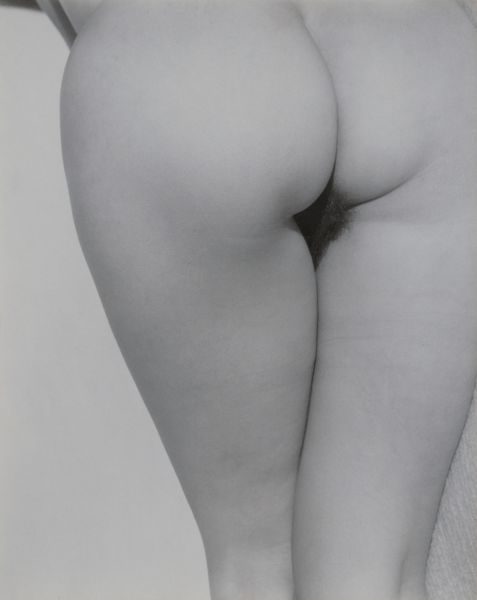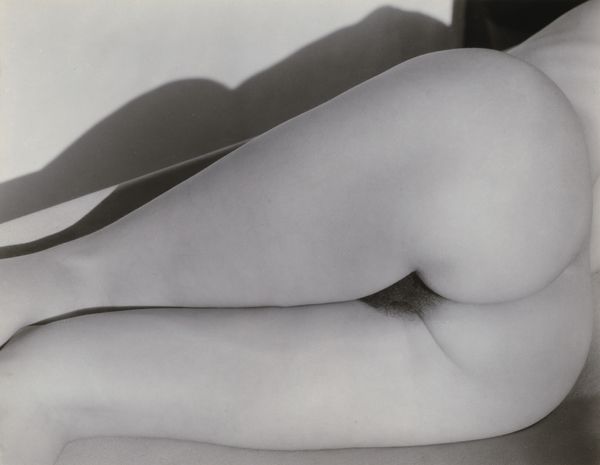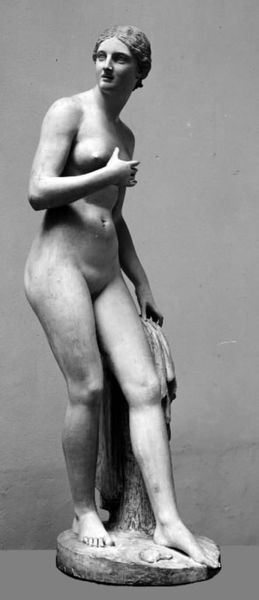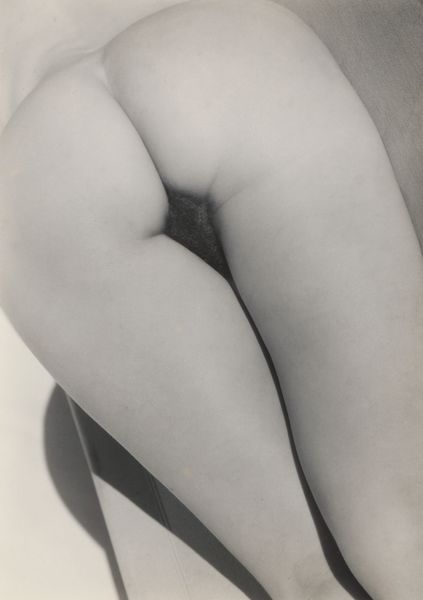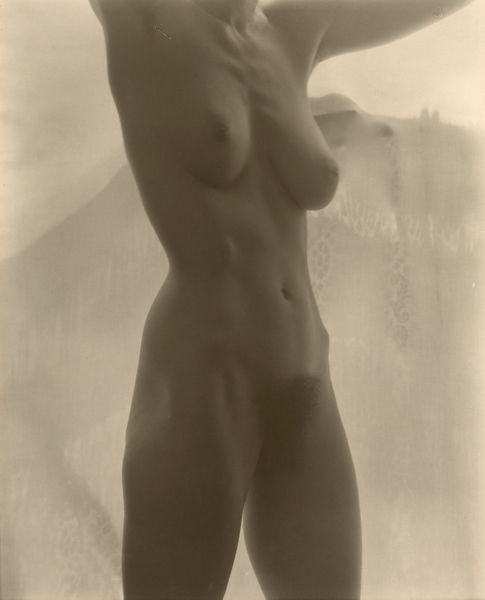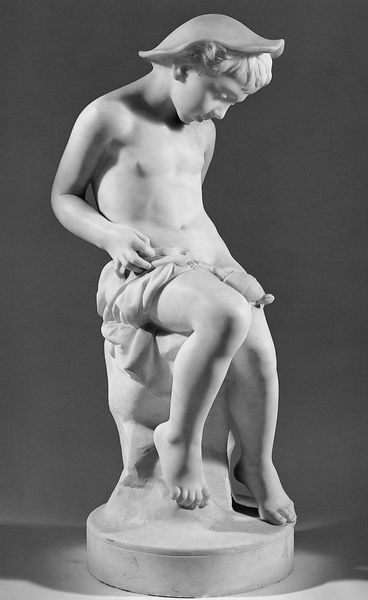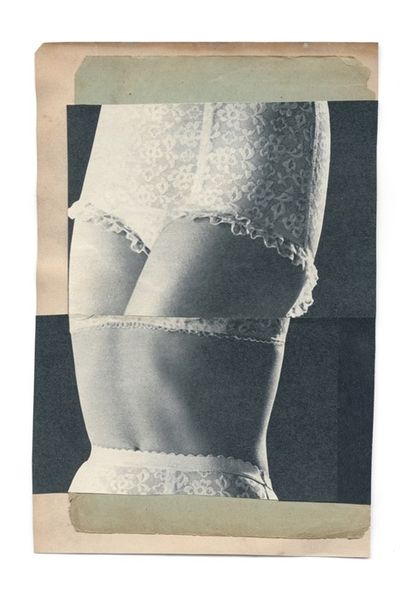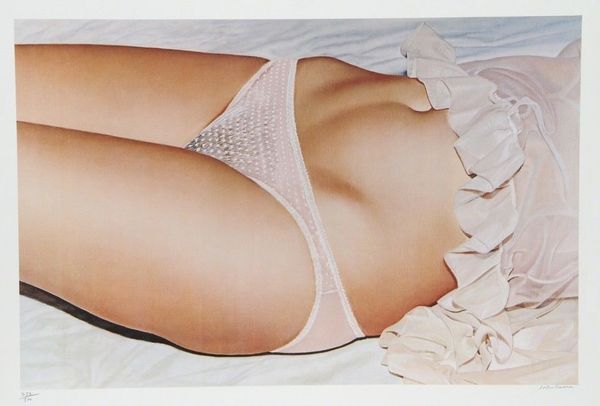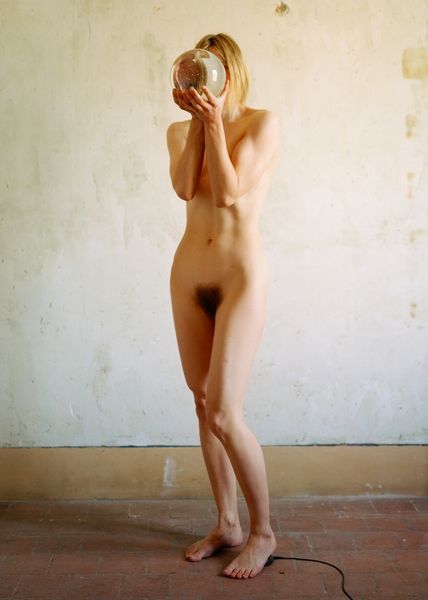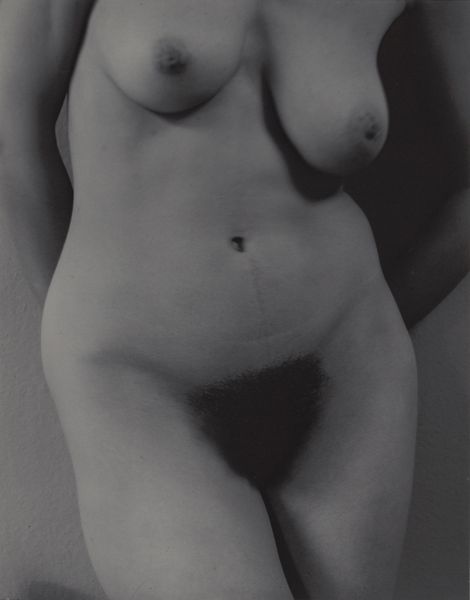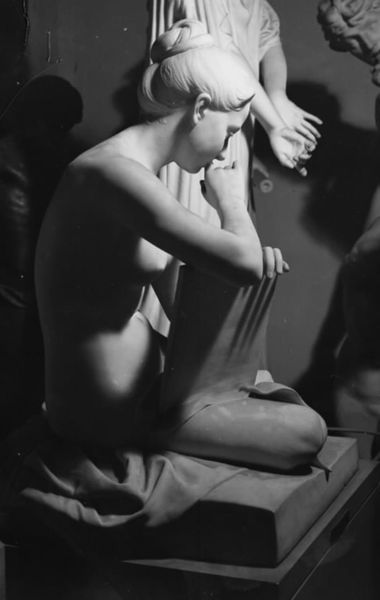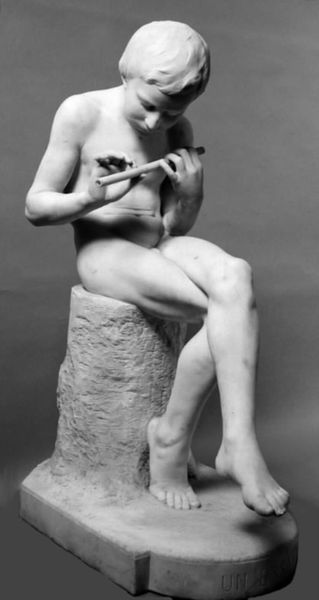
sculpture, marble
#
portrait
#
statue
#
sculpture
#
greek-and-roman-art
#
classical-realism
#
black and white format
#
figuration
#
sculpture
#
black and white
#
history-painting
#
academic-art
#
monochrome
#
marble
#
nude
#
realism
#
statue
#
monochrome
Dimensions: 168 cm (height) x 45 cm (width) x 44 cm (depth) (Netto)
Editor: So, here we have Vilhelm Bissen’s "Atalanta" from 1891, a marble sculpture currently held at the Statens Museum for Kunst. It's striking how the smooth, cool marble brings such a sense of stillness, almost frozen motion to the figure. How do you see this piece in terms of its materials and context? Curator: Well, the choice of marble is significant. Consider where Bissen sourced it – was it local, perhaps even connected to specific quarries or workshops in Copenhagen, or imported, suggesting access to wider networks of trade and artistic exchange? That very materiality speaks volumes about artistic aspirations and economic realities of late 19th century Denmark. Editor: That's a point I hadn't considered. I guess marble itself has inherent associations, doesn't it? Its historical use... Curator: Exactly. And who would have commissioned or bought such a piece? A private patron, perhaps keen to display classical learning and wealth, or a public institution aiming to promote a certain kind of national identity? That labor and patronage fundamentally shaped what Bissen produced. Was he allowed creative freedom, or were there expectations linked to the materials he used? Editor: It makes me wonder about the labor involved. We tend to only think of Bissen's artistry but don’t account for all the anonymous craftsmen. Curator: Precisely! Consider the stonecutters, the polishers – their skills are just as crucial. The social relations of production are woven into the very fabric of the statue. And think about how viewers would engage with it. How would their social class influence their understanding and appreciation of this art? Editor: So, the sculpture is as much a product of labor, trade and patronage as it is Bissen's skill. Curator: Absolutely. By understanding these processes, we challenge the romantic notion of the solitary artist and gain a richer understanding of "Atalanta" and the era that birthed it.
Comments
No comments
Be the first to comment and join the conversation on the ultimate creative platform.
